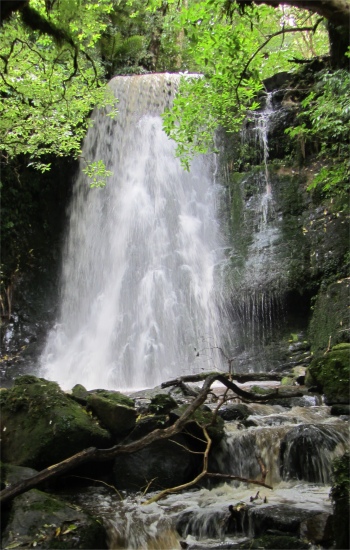 Matai Falls |
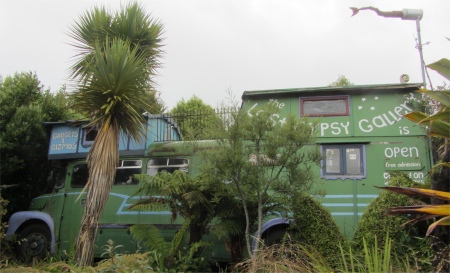 Lost Gypsy Gallery |
On leaving Matai Falls, I drove southwards through rolling countryside to the cute forested village of Papatowai. The place of interest here is the Lost Gypsy Gallery, just by the roadside as I left Papatowai. The main gallery appears to be an old school bus, that a Kiwi by the name of Blair Sommerville has filled to the brim with odds n' sods. By this I mean the ceiling is adorned with old circuit boards, walls had shelves stacked high with tiny mechanical and electrical things that buzzed, whirred and performed all manner of automated acts. A model train even ran around at head height, the track propped up on boxes or gadgets, and at times even suspended from the ceiling.
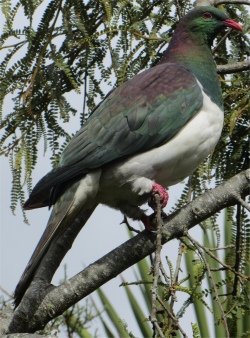 Wood Pigeon |
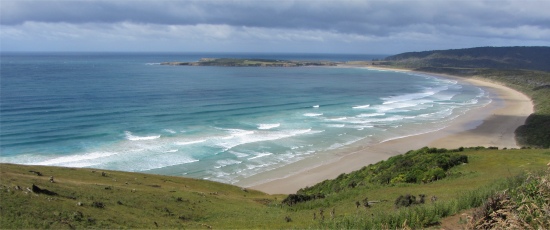 Tautuku Bay from Florence Hill |
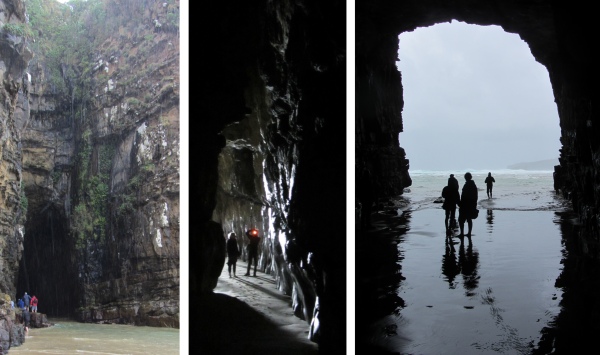 Cathedral Caves |
I carried on the highway to the turnoff to Cathedral Caves. The land is owned by the Maori, so an admission fee had to be paid. The lady selling the tickets was trying to explain to the old dear in front of me that there is a deep waterhole at the entrance to the cave. "It is possible to wade through it, but it would be chest deep. You'd be better off walking in along the ledges at the side," she instructed the old woman. The old woman responded in a mixture of English and German, and then carried on towards the walkway. I caught up with her on my way down the track through the bush, and explained to her in the German I could muster. Now she understood. Despite her age, she could walk briskly. She was doing a four month tour with her husband, who sadly broke his leg after two months, so she was fitting in what she could whilst attending to her hubby's needs.
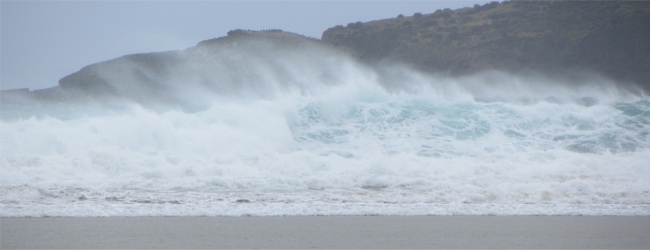 Rough Seas Breaking on Waipati Beach |
Barely a kilometre south of the caves was a turnoff down Rewcastle Road to a car park for the McLean Falls. A walk through rimu and tree ferns, in a continuous set of falls pouring from the heavens, brought me to first a small set of falls, then the much larger set of most impressive 20m falls. The heavy rains had turned this into a stunning spectacle, and the roar extended far down the valley.
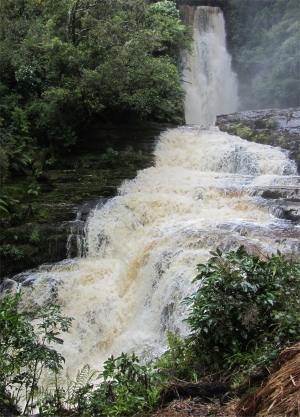 McLean Falls |
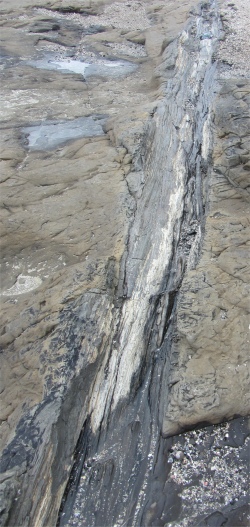 Petrified Log in Curio Bay |
Having marvelled at this ancient forest, I made my way down to a significant milestone, the most southerly point of the South Island, Slope Point, maybe the furthest south I will ever travel in my lifetime, or maybe not. A farmland walk through horizontal, stinging rain, passing almost horizontal trees and grass brushed flat against the contours of the ground, brought me to a stubby beacon and the obligatory signpost, mirroring the most northerly point I visited on the North Island, Cape Reinga. Compared with Cape Reinga, it was a bit of an anti-climax. The northern most point was served by tour busses, and was bathed in subtropical light. Slope Point was only reachable by narrow twisting gravel tracks which tour busses couldn't negotiate, and the weather down here was decidedly colder, wetter and windier. There was no one here to take a snap of me by the sign post. However, dramatic views of the headlands were to be had from this landmark spur of rock, a windswept domain as evidenced by the local trees. I stood and looked around me. Far over the horizon to the west lay Argentina, to the east was Chile, and to the south the cold wastes of Antarctica. This was a truly monumental place, and I shifted from foot to foot for quite a while trying to comprehend the scale. I concluded I would need to be several thousand miles out into space, gazing down from above the South Pole to truly appreciate the scale.
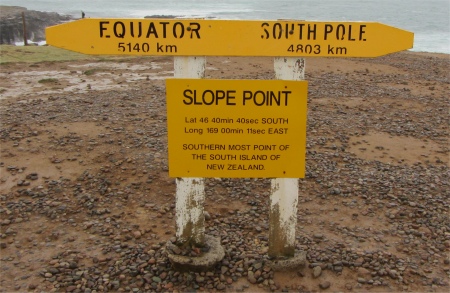 Slope Point - Most Southerly Point on South Island |
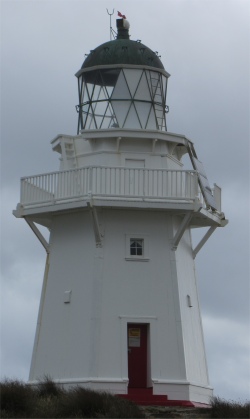 Waipapa Point Lighthouse |
The Catlins had started with a lighthouse, and finished with a lighthouse. I had found my journey through this remote, rugged and beautiful region with its abundant wildlife, totally relaxing and enjoyable, pure escapism and a chance to charge my batteries. It certainly was well off the beaten track.
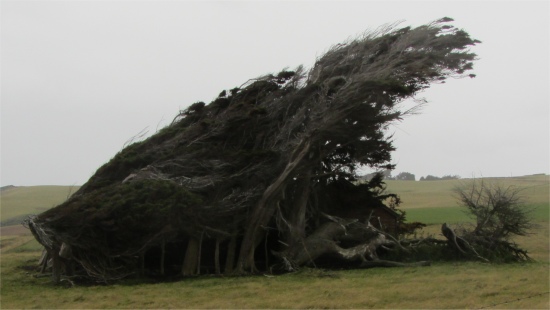 Windswept Trees on the Southern Tip |
I went back to the communal kitchen and cooked an impromptu meal, and chatted to Aaron, the Kiwi chap who had pointed out the manager's office to me. He was one of a few folk who lived in the cabins permanently, similar setup to Te Kuiti really. He seemed to have some Maori blood in him. "Where ya from, bro?", he asked with a big beaming smile and a loud chuckle. The use of the word "bro" confirmed he had a lot of Maori blood. "It's great here," he said, "I have this big kitchen, shower and toilets next door, and I don't have to tidy up these facilities since cleaners do that, though I do wipe down the surfaces in the kitchen after I have used them. What else could I ask for?" He had grown up in Whanganui, but now worked as a sheep shearer down in Invercargill. We talked about the Rugby World Cup, and the attractions or lack of attractions of Invercargill. He was a happy soul. I bumped into him several times during my stay on the site, and he always had the same big smile and happy-go-lucky nature about him.
Another resident popped in to microwave his supper. He treated me, the outsider, with suspicion, and I managed to get a grunt out of him. Yet another resident would occasionally hurtle in and check the oven contents before dashing out again. He was cooking a roast to impress his new girlfriend. A few more campers turned up in huge campervans, but these folk kept themselves to themselves and never ventured into the kitchen. Are they trying to tell me something?
